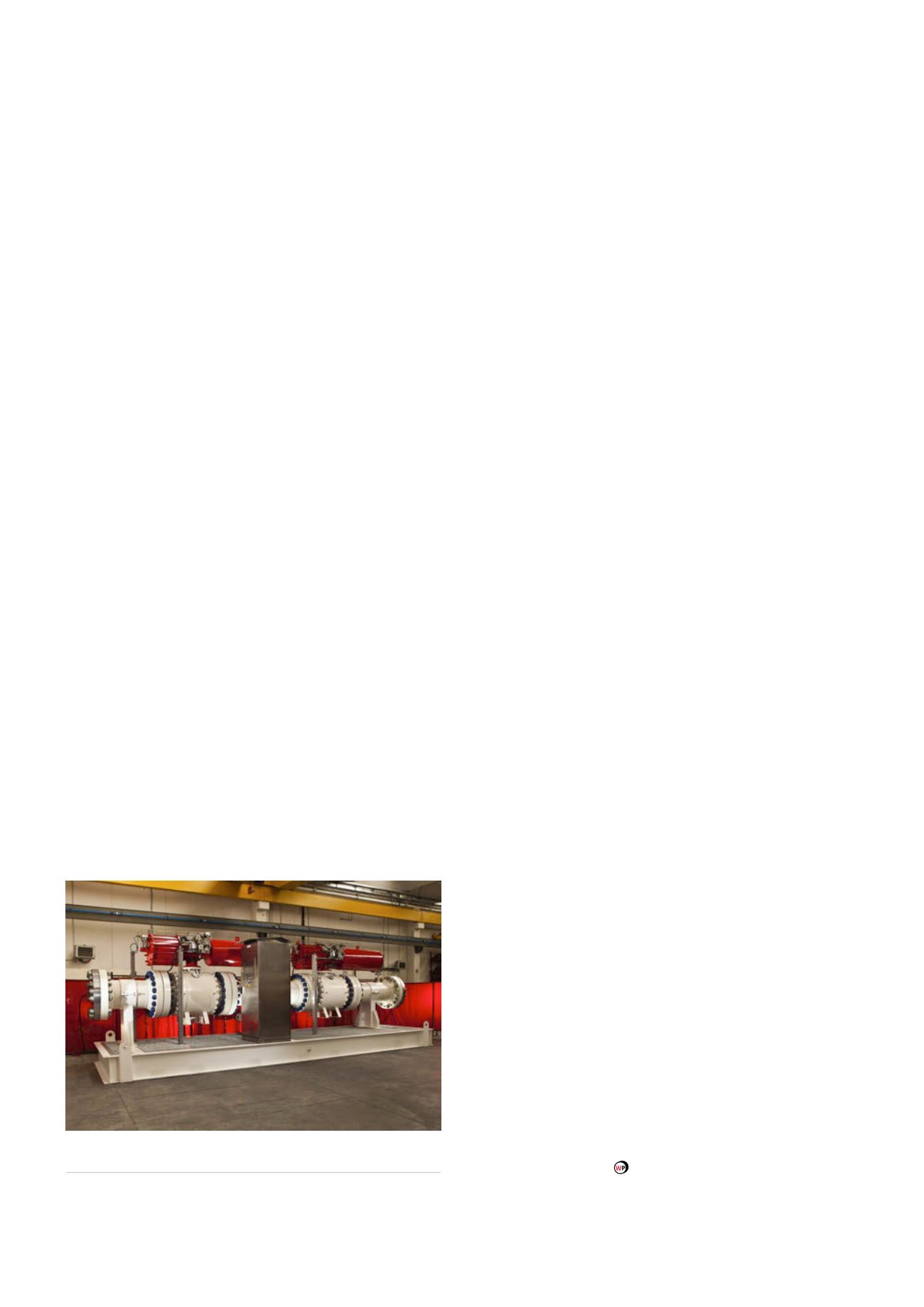
safety levels such as SIL3 are not just met, but in many
cases, exceeded.
In each system, a number of sensors detect pressure
levels both upstream and downstream. The logic controller
interprets these data feeds to establish whether there
is a genuine pressure build-up or a failure. Two out of
three sensors must be in agreement for the system to act
– a function that negates the possibility of unnecessary
shutdown and process interruptions. Where a genuine
excess level of pressure is detected, the system then
responds by closing the valve very quickly – usually within
2 secs – to ensure that unsafe pressure levels cannot
proliferate in the pipeline, minimising the risk of damage to
downstream systems and components. The ‘final element’,
which manages the shutdown process, consists of a valve
actuator and solenoids.
Designing a HIPPS system
There are a number of factors that system designers must
consider when specifying HIPPS products. Perhaps the most
important are the properties of the medium being carried
in the pipeline – whether the content is liquid or gaseous,
its level of corrosiveness, and particulate content. Also
key are the required time of response, SIL level and class
of sealing. Other factors that must be taken into account
include footprint and layout, available space, local and
international regulations applicable and design standards.
These factors between them will govern the types of
controls, solenoid and valves that will be needed. Subject
to the medium content and temperature, components
made from specialist materials may be required.
Depending on the specific requirements of the
application, specifiers can select from self-actuated
mechanical systems, self-actuated pneumatic systems,
pneumatic actuated systems, hydraulic actuated systems
and electronic systems.
Whatever products and technology are selected, the
final system will normally be required to meet one of two
standards:
)
)
IEC 61508: Functional Safety of Electrical/Electronic/
Programmable Electronic Safety-related Systems.
)
)
IEC 61511: Functional Safety-Safety Instrumented
Systems for the Process Industry Sector.
Introduced in 1998 and 2003 respectively, they are
non-prescriptive, performance-based standards providing
a detailed framework and life cycle approach for designing
implementing and managing safety systems across a variety
of sectors including oil and gas.
Other standards, which may be relevant depending on
the application, include the European standard EN12186
(formerly the DIN G491) and more specifically the EN14382
(formerly DIN 3381), which have been used in mechanically
instrumented overpressure protection systems.
These standards prescribe the requirements for the
overpressure protection systems, and their components,
in gas plants, specifying not only the response time and
accuracy of the loop but also safety factors for over-
sizing of the actuator of the final element. Independent
design verification and testing to prove compliance to the
EN14382 standard is mandatory.
The basis for the design of all systems is the required
SIL, which will be gauged during the risk assessment
of the plant or process, and denotes the required risk
reduction. The IEC standards state the requirement for
each SIL for the life cycle of the equipment, including
design and maintenance, as well as defining the probability
of failure on demand (PFD) for the complete system, and
architectural constraints for the system and its various
elements.
To ensure the best system and compliance with all
relevant regulations, it is essential that system designers
collaborate with the suppliers of valves and other ancillary
products from the very outset of a project.
What next for HIPPS?
While optimising safety is at the heart of the majority of
developments currently ongoing in HIPPS, it is the drive
to reduce the use of flaring to burn off excess gas, or gas
from overpressure, which is perhaps the most significant
factor. Until recently, there have been few controls
over emissions in the Middle East. Now, however, more
stringent controls are being introduced. This and the cost
of lost gas from flaring, is focusing attention on the role of
HIPPS.
Other advances are being made in the area of
materials. Following extensive consultation with the major
players in the oil and gas sector, IMI Critical Engineering
has developed a system that is set to be proposed as
an industry standard for HIPPS. Further advances are
expected in the innovation of systems for subsea and
unconventional oil recovery, while the need to reduce
capital expenditure and insurance costs – as well as plant
footprint – is also set to continue to drive innovation in
the design of HIPPS.
Figure 2.
HIPPS systems shut off the source of high pressure
before the design pressure of a system is exceeded.
74
World Pipelines
/
MARCH 2016


